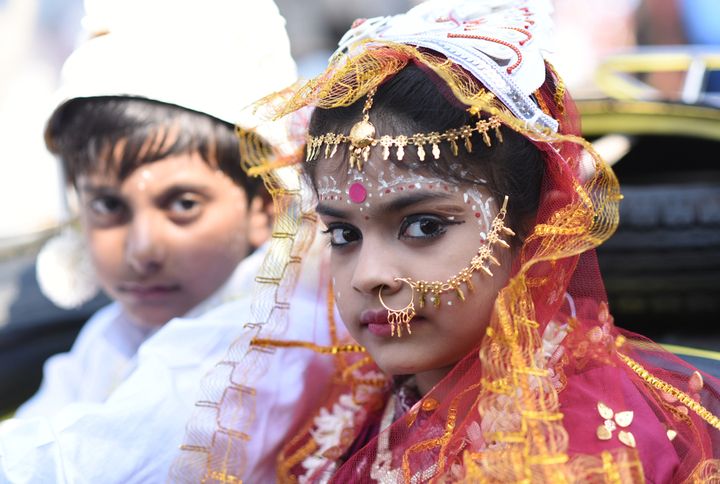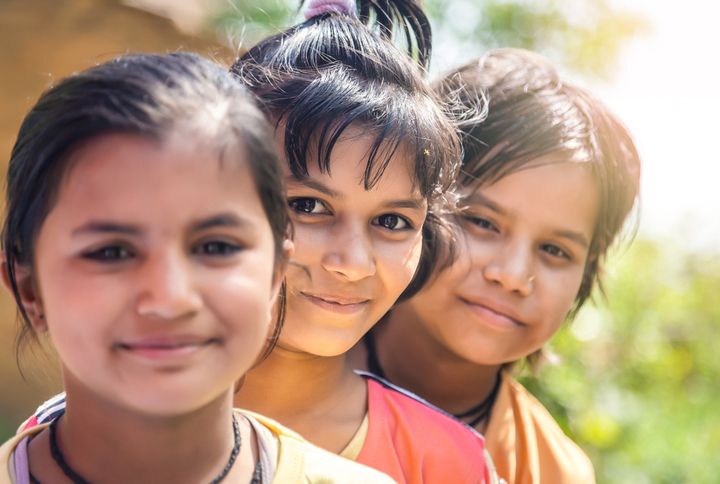Every year, October 11 is recognised as the International Day of the Girl Child. To commemorate the day, each year UNICEF launches a campaign aimed at amplifying the voices that demand girls’ rights and calls for freedom from social violence. This year’s campaign, with the theme of “My voice, our equal future”, is focusing on girls’ rights to live free from gender violence and harmful practices.
In the spirit of demanding change, let’s take a look at the lives of girls in India. Data and statistics reflect the many societal and cultural practices that affect the lives of our girls. India’s population makes up 17% of the world, and 48% of this population is female. Our girls have a real impact on the world and its future. Harming one is harming the other by extension. Here are some of the things that pose a threat to our girls today.
Child Marriage

According to UNICEF, 1 in every 3 child brides in the world is a girl in India. Of the country’s 22.3 crores (223 million) child brides, 10.2 crores (102 million) were married before turning 15.
India has more than 45 lakh (4.5 million) married girls under 15 years of age who have children, of which 70% have 2 children.
Female Foeticide and Infanticide
According to a report by the United Nations Population Fund (UNFPA), nearly 4.6 crores (45.8 million) females are ‘missing’ out of the Indian demography in 2020, primarily owing to pre and post-birth sex selection practices like female foeticide and infanticide. The report derives the number of ‘missing females’ from the imbalances reflected in sex-ratio imbalances. These imbalances are a direct result of prenatal selection on the basis of sex, combined with mortality stemming from post-natal sex-selection.
Population counts indicate that there are 933 women for every 1000 men in India. When the sex rate was first studied in 2001 by a study conducted for the Lancet journal, researchers estimated that there may be 10 million ‘missing’ female births from the two decades preceding 2001.
Female Genital Mutilation (FGM)
The Dawoodi Bohra community of Indians has been practising a ritual of female circumcision on their girls when they turn 7 years of age. Various studies have tried to understand the premise of this practice, referred to by the community members as khatna. Most senior members of the community claim that the practice is both spiritual and hygienic by nature. However, according to the women who have passed down the practice for generations, the primary reasons for the practice are—religious obligation, tradition, and an effort to curb young girls’ sexuality.
In an online survey of Bohra women, NGO Sahiyo found that khatna had been performed on 80% of participants, with most of them cut when aged six or seven. 81% said that they wanted the practice to stop.
Sexual Abuse
Although research shows that both sexes are affected by child sexual violence, studies have been conducted exclusively among young women below 18 years of age. One such study by the National Center for Biotechnology Information showed that the prevalence of child sexual abuse ranged from 4%-41% in girls. This range is probably grossly underreported.
Girls’ Education
Gender inequality has kept Indian girls out of schools for a long time. In 2017, 32% of girls were out of school, compared to 28% of boys. A woman’s inevitable departure to another home after her marriage has deemed girls’ education unnecessary in Indian society, and families find it futile to invest in girls financially.
Every year, 230 lakh (23 million) Indian girls drop out of school after they begin menstruating because of a lack of sanitary napkin dispensers and overall hygiene awareness in schools.
In a report by the National Commission for Protection of Child Rights last year, data showed that around 40% of girls between the ages of 15-18 were out of school, and 65% of them were engaged in household work.
A world that is good for women is a good world. These statistics are only the building blocks for movements at the grassroots level that change the lives of girls.
Did any of these numbers surprise you? How are you commemorating International Day of the Girl Child? Please share it with us in the comments below!
Join Malini’s Girl Tribe on Facebook to be a part of more such conversations!

